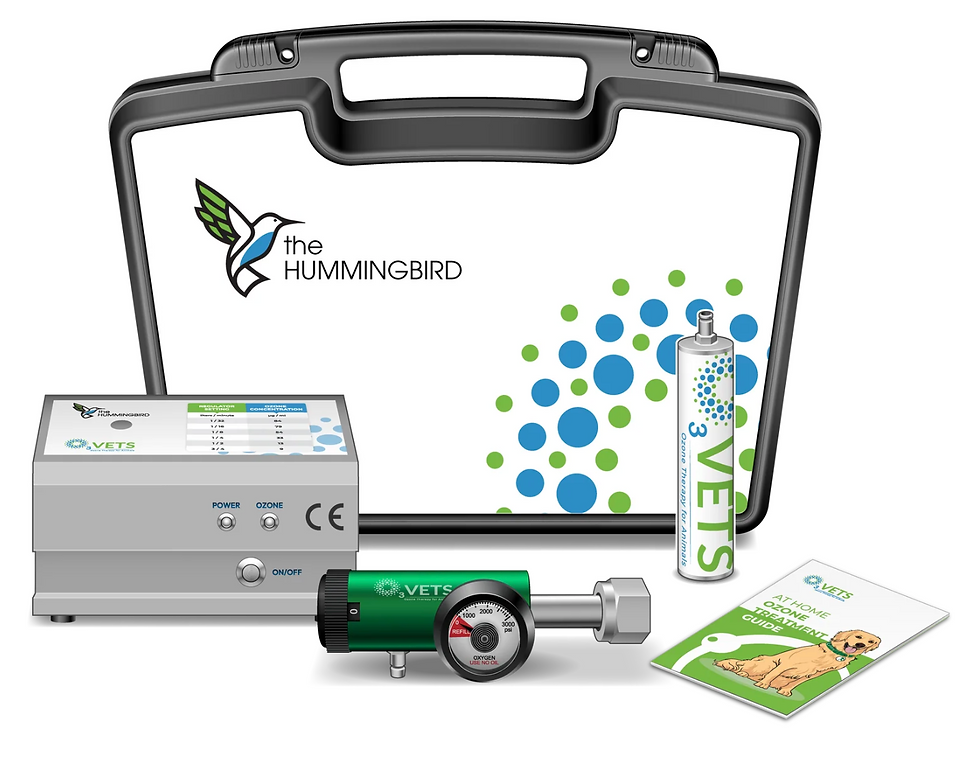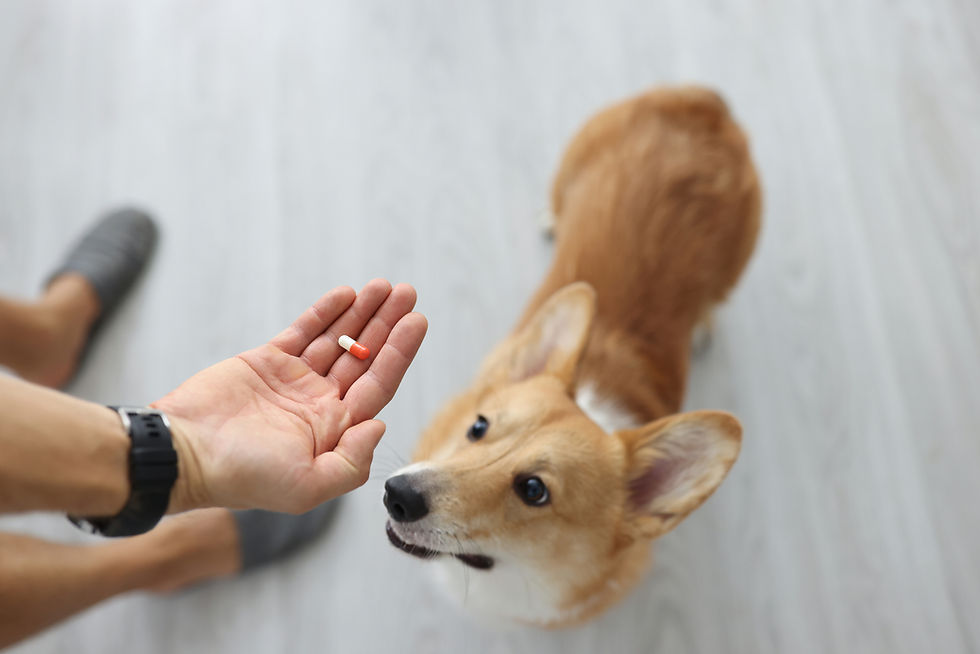Ozone Therapy for Animals: What It Is, What It Isn’t, and How to Explore It Safely
- Dr. Angelique Barbara

- Aug 25
- 2 min read

What is ozone therapy?
Ozone therapy uses medical-grade ozone (O₃) as a biologic response modifier. In vet practices, it’s typically applied indirectly—via ozonated fluids or oils, topical “bagging” for limbs/skin, dental rinses, ear flushes, or rectal insufflation—rather than inhaled gas. Research suggests ozone can reduce microbial load, support wound care, and modulate inflammation/oxidative stress when dosed properly, though high-quality veterinary trials remain limited and protocols vary. PMCScienceDirectResearchGate
How might it work?
Low, controlled ozone exposure appears to create a brief oxidative “signal” that up-regulates the body’s antioxidant defenses (notably through the Nrf2/Keap1 pathway). This may influence immune tone, circulation, and tissue repair—one reason vets explore it as an adjunct in chronic or hard-to-heal cases. BioMed CentralPMCMDPI
Where do vets use ozone therapy?
Common veterinary applications include:
Wound and skin care: Topical ozonated oils/water and bagging can help lower bioburden and support granulation/epithelialization in stubborn wounds. PMC+1
Dental/oral hygiene: Ozonated irrigants can reduce bacterial load during dental procedures (as an adjunct to standard care). IndeVets
Ear/skin infections & hot spots: As part of a multimodal plan when biofilm or recurrent irritation is a concern. PMC
Evidence ranges from case reports to small studies; outcomes are promising but not definitive, and more standardized dosing research is needed. Always pair ozone with appropriate diagnosis and conventional care. ResearchGate
Safety basics & contraindications
Never allow inhalation of ozone—lungs and eyes are particularly sensitive. Most adverse effects stem from improper exposure or technique. sryahwapublications.comHealth
Work with a veterinarian trained in ozone methods and dosing. Certain routes (e.g., intravenous gas) are not recommended/prohibited in many regions due to embolism risk. sryahwapublications.com
As with any therapy, watch for temporary fatigue, cough, or GI upset; stop and contact your vet if you notice concerning reactions. Bhatt Integrative Veterinary Specialty
Is it right for my animal?
Consider ozone therapy if your vet thinks your pet could benefit from adjunctive antimicrobial support, wound care help, or gentle immune modulation—especially where standard care alone hasn’t fully succeeded. It’s not a cure-all and should be integrated thoughtfully with diagnostics, nutrition, pain control, rehab, and environmental management. PMC
Choosing equipment (for veterinary-guided home use)
If your veterinarian recommends a home protocol (e.g., ozonated oils or carefully supervised topical applications), you’ll need a reliable, animal-appropriate generator. Here’s a reputable option many pet owners explore with their vets:
FAQs
Will ozone replace antibiotics or surgery?No. Think of it as a supporting player, not a substitute for indicated veterinary treatments. PMC
How fast will I see results?For topical wounds/skin issues, changes may be seen in days to weeks; deeper or chronic problems may take longer and need a series of sessions—always guided by your vet. PMC
Is there strong evidence in animals?Growing—but still limited compared to human data. Reviews conclude more controlled studies are needed to standardize techniques, doses, and indications. ScienceDirectResearchGate
Bottom line
Ozone therapy can be a useful adjunct in veterinary care—especially for wound management and microbial control—when applied correctly and safely. Partner closely with a trained veterinarian, set realistic goals, and integrate ozone within a holistic plan tailored to your animal.




Comments